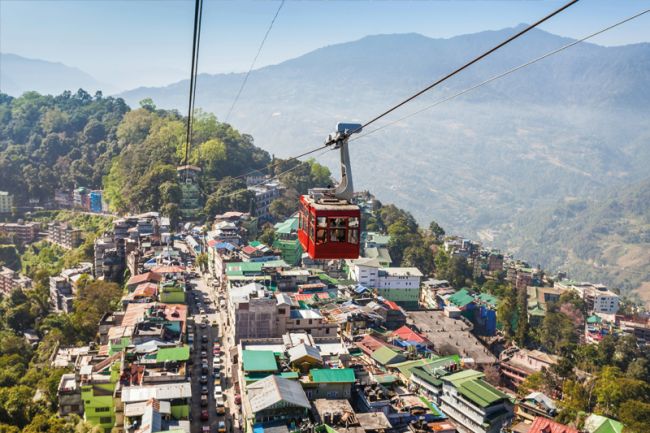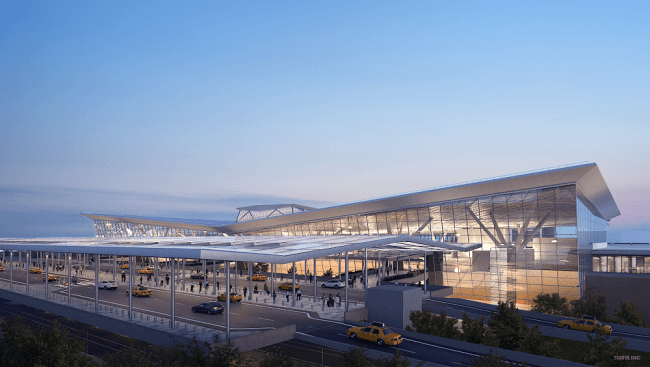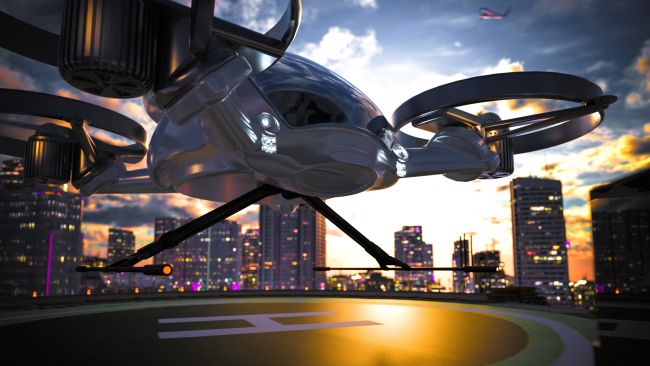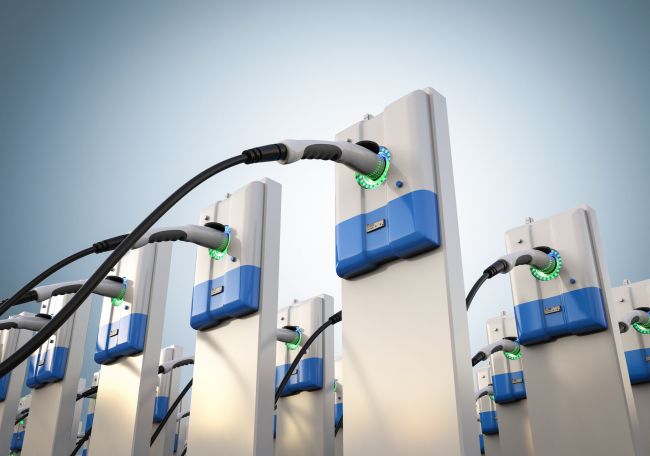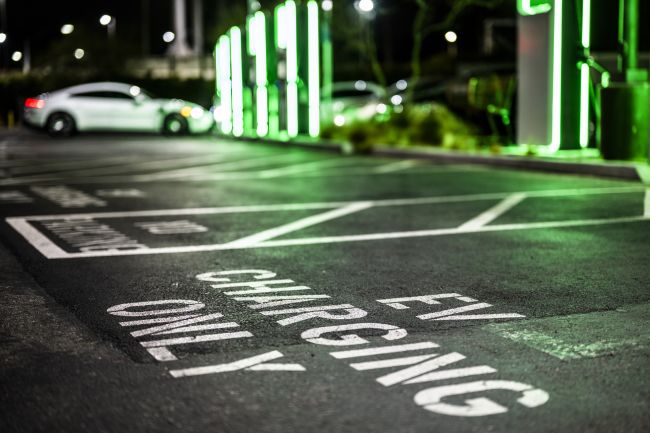Getting ready for take-off: Understanding vertiports and AAM infrastructure
The development of vertiports will play a pivotal role in the advanced air mobility (AAM) transformation.

Welcome to ‘Getting ready for take-off’ Steer’s series on Advanced Air Mobility (AAM). Since 2021 Steer’s infrastructure and aviation teams have been working on ridership and revenue forecasting for electric vertical take-off and landing (eVTOL) aircraft, a groundbreaking form of transit that until recently was a thing of science fiction.
Today we know that eVTOL will soon be taking to the skies of cities across the US and the world, making journeys simpler for passengers and easing congestion on the gridlocked streets below. How many people will be riding in these aircrafts? What will the price point be? And what legislation and regulatory policies will govern their introduction? These questions and more will be answered in our series. Read below to find out more.
The development of vertiports will play a pivotal role in the advanced air mobility (AAM) transformation. Vertiports are specialized infrastructure designed to accommodate vertical takeoff and landing (VTOL) aircraft, such as drones and air taxis. These facilities aim to enhance the efficiency, accessibility, and safety of urban air transport, making it a viable alternative to traditional ground-based transportation.
Vertiports are ground or elevated facilities equipped to handle VTOL aircraft operations. They provide the necessary infrastructure for takeoffs, landings, maintenance, and charging of electric VTOL (or eVTOL). Vertiports can be integrated into existing structures such as rooftops of buildings, airports, or newly constructed standalone facilities. Their design and functionality are tailored to meet the specific requirements of urban and regional air mobility, including swift passenger boarding, efficient vehicle turnaround, and seamless connectivity with other modes of transport.
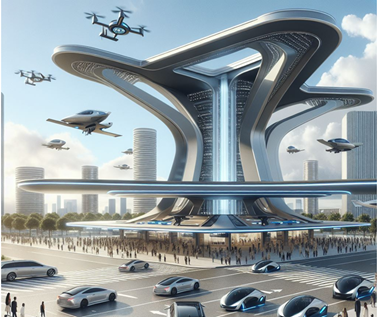
Components of vertiports
Vertiports’ infrastructure comprises several key components. The landing pads are the primary area where VTOL aircraft take off and land. These pads could be equipped with advanced guidance systems to ensure precision landings and safety, similar to existing heliports and airports. They are designed to accommodate various types of VTOL aircraft, with considerations for weight, size, and rotor configurations. In the absence of aircraft parking stands or to speed up the turnaround times, landing pads can also be used as parking stands.
According to the FAA regulations, the landing pad is made up of several areas, being the Final Approach and Take Off area (FATO) the one normally used to determine the minimum size of the infrastructure required. Taking for example Archer’s Midnight aircraft, which is 47 feet long (taking the largest footprint length), will require a FATO of almost 100x100 feet[1].
If the size of the vertiport allows for it and the volume of operations requires more aircraft movements and passenger numbers throughput, the vertiport can be designed with one or more aircraft parking stands. These will enable better and safer ground handing activities, including battery cooling and charging, and passenger boarding and disembarking.
For the operation of eVTOL aircraft that require battery charging during the turnarounds or overnight, vertiports must be equipped with charging stations. These stations provide fast and efficient charging solutions to minimize downtime and maximize operational efficiency. According to the National Renewable Energy Laboratory, charging the batteries of an eVTOL requires Direct-current (DC) peak charging power ranging from 300kW to 1MW per aircraft[2]. The ground equipment to provide this level of power is being developed.
High-density batteries, like the ones powering the eVTOLs that are being certified by the FAA and EASA, reach very high temperatures during the operation, which will require cooling equipment at the parking stands. Battery swapping during a turnaround will involve higher safety risks and maneuvering of heavy equipment in an area that might already be congested with other ground handling equipment and transiting of staff and passengers.
Advanced navigation and control systems are integral to vertiports. These systems manage air traffic, ensure safe landings and takeoffs, and provide real-time data on weather conditions, aircraft status, and passenger information. Integration with broader air traffic management systems is essential for coordinated and safe operations.
Passenger terminals within vertiports are designed to provide higher volumes of operations and better passenger experience. These terminals are equipped with ticket counters, security checks, and waiting lounges with amenities for passengers. Maintenance facilities are essential for the upkeep of VTOL aircraft, although these could be located at vertiports, the preference would likely be at airports or aerodromes where there is ample aircraft parking capacity and charges are low.
Estimating capacity
To understand how many passengers can travel on VTOLs we need to map out the different designs and scales based on the number of landing pads (FATOs) and aircraft park stands.
The figure below shows the number of flights that can depart per hour for vertiports with one and two FATOs.
A one-FATO vertiport maximizes its throughput with three stands and hits peak use at 14 flights per hour.
A two-FATOs vertiport maximizes its throughput with six stands, reaching maximum departures at 29 flights per hour.
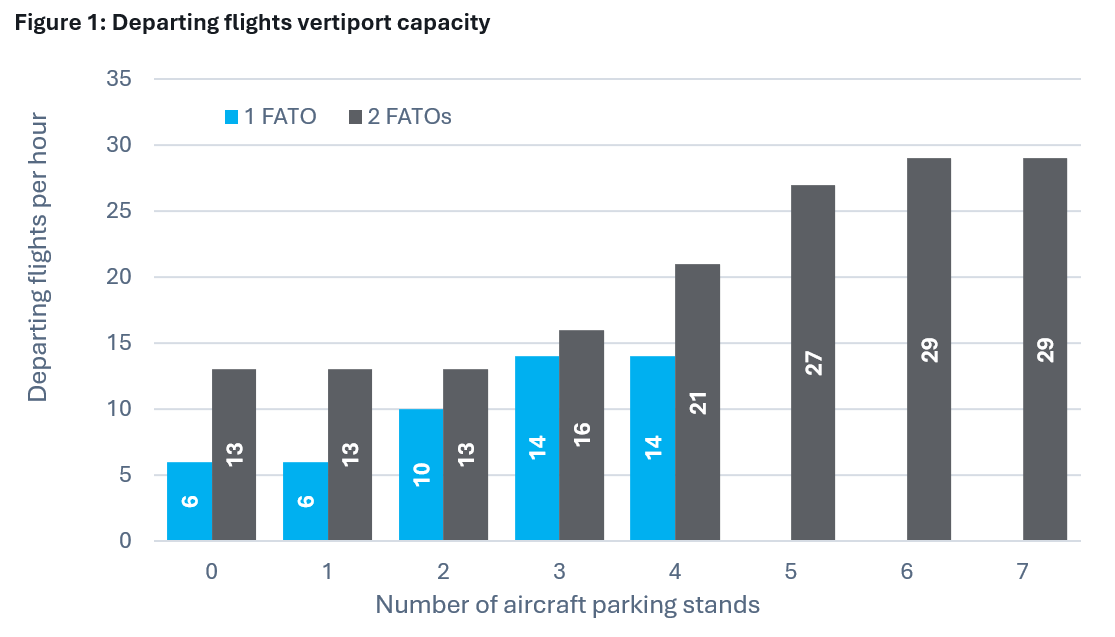
Source: Steer
Steer has developed a classification of vertiport designs which nomenclature captures the number of FATOs and number of stands as follows: Steer Vertiport (SV)-[#FATOs]-[#Stands]. For example, SV-2-3 indicates that the vertiport has 2 FATOs and 3 stands.
| Vertiport type | Number of FATOs | Number of stands | Design |
|---|---|---|---|
| SV-1-0 | 1 | 0 |  |
| SV-1-1 | 1 | 1 |  |
| SV-1-2 | 1 | 2 |  |
| SV-1-3 | 1 | 3 |  |
| SV-1-4 | 1 | 4 |  |
| SV-2-0 | 2 | 0 |  |
| SV-2-1 | 2 | 1 |  |
| SV-2-2 | 2 | 2 |  |
| SV-2-3 | 2 | 3 |  |
| SV-2-4 | 2 | 4 |  |
| SV-2-5 | 2 | 5 |  |
| SV-2-6 | 2 | 6 |  |
| SV-2-7 | 2 | 7 |  |
Source: Steer
Note: The designs are schematic and do not reflect the minimum required distances.
Taking a four-seater VTOL aircraft and an assumed load factor of 75%, the number of aircraft operations can be translated into passenger numbers, as shown in the next figure. The estimation of the total area required for the vertiport infrastructure, including the landing pads, aircraft parking stands, taxiways and terminal building, is also included in the figure.
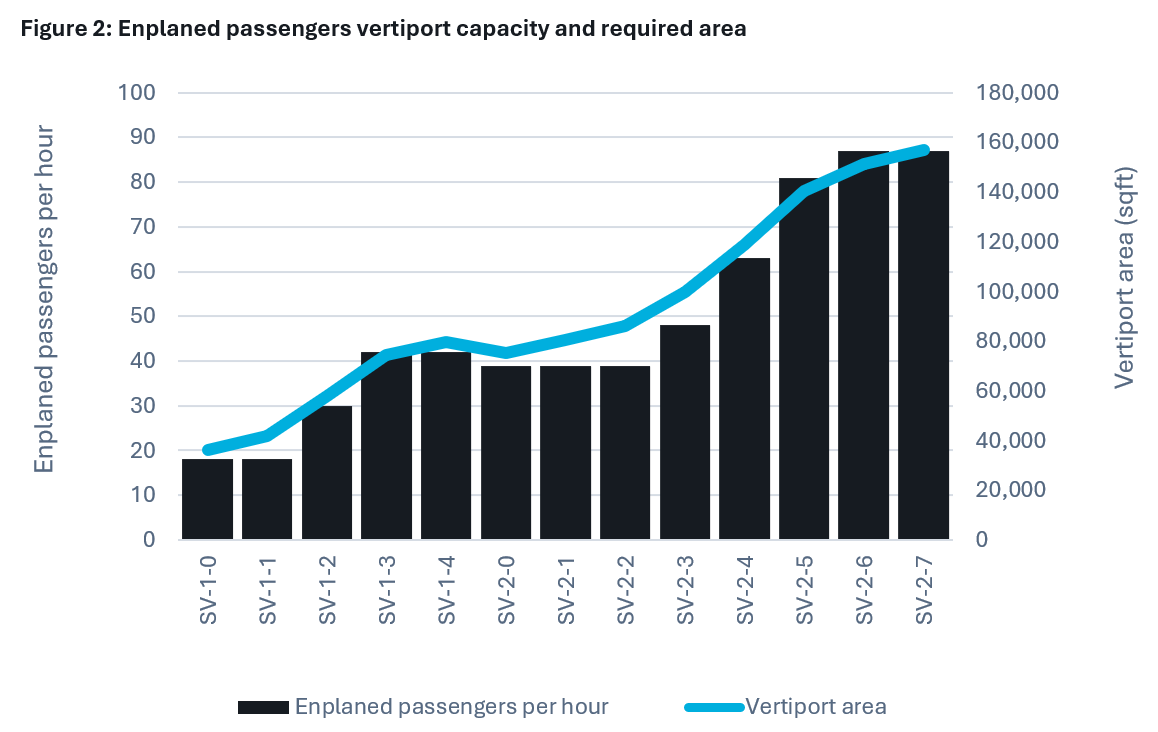
Source: Steer
What is the future for vertiport infrastructure?
VTOLs, eVTOLs and vertiport infrastructure carry huge potential but there are challenges to address before realizing our AAM future.
A robust regulatory framework is essential to ensure safety, standardization, and seamless integration with existing airspace, requiring collaboration between governments and aviation authorities.
Public acceptance is another key consideration, with concerns about noise, safety, and social equity needing to be addressed through transparent communication and community engagement.
Urban space is limited, making it difficult to find suitable sites to which Public-Private Partnerships on public land may provide a solution.
Technological advancements in eVTOL aircraft, batteries, and navigation systems must continue to progress to improve efficiency and reliability.
High power demand at vertiports also raises energy supply concerns, highlighting the need for on-site solutions like battery storage and solar panels.
Safety remains paramount, especially near urban areas, requiring rigorous protocols, advanced systems, and well-trained staff.
However, with thoughtful planning and innovation, vertiports could become a transformative part of future urban mobility.











